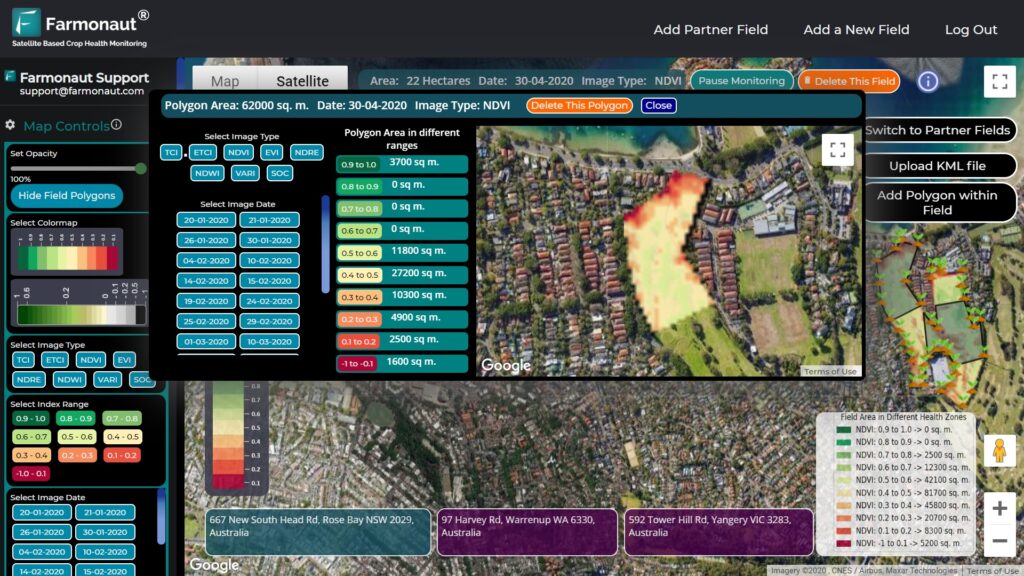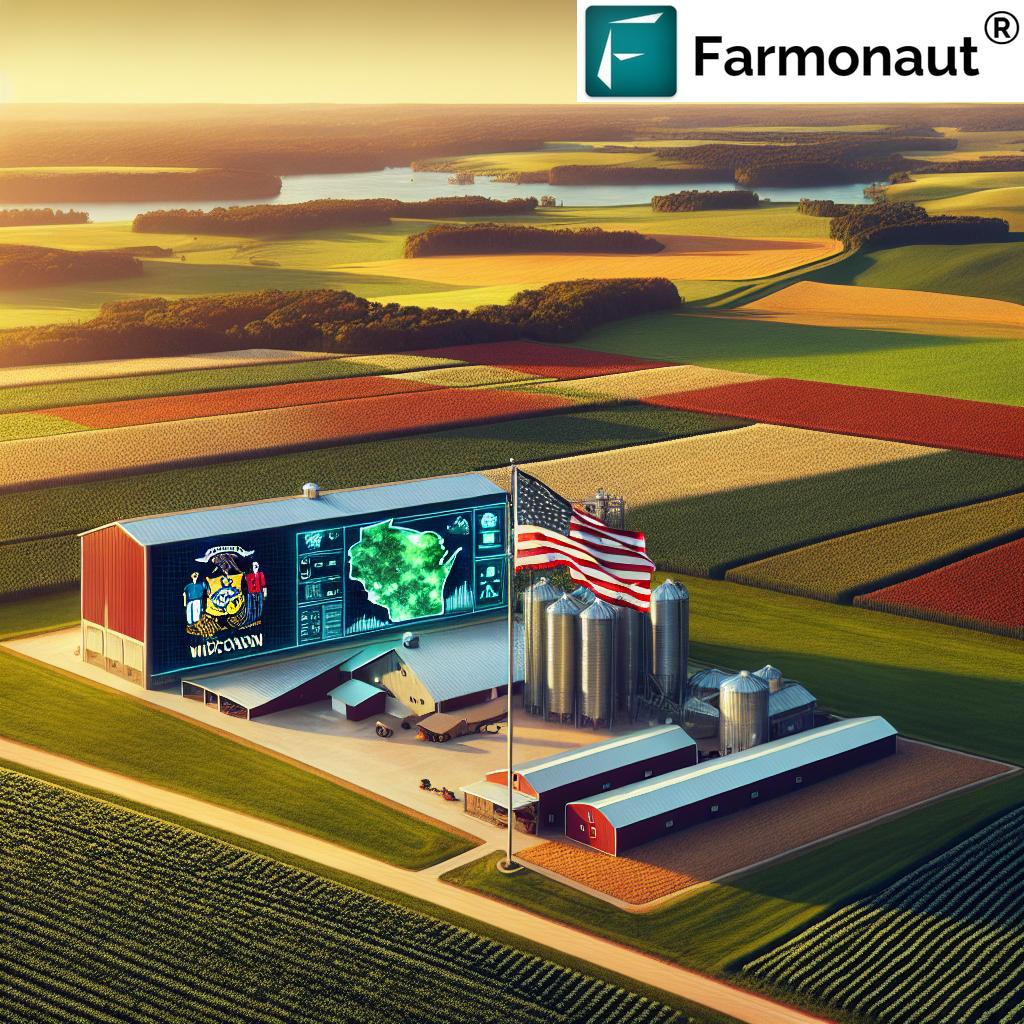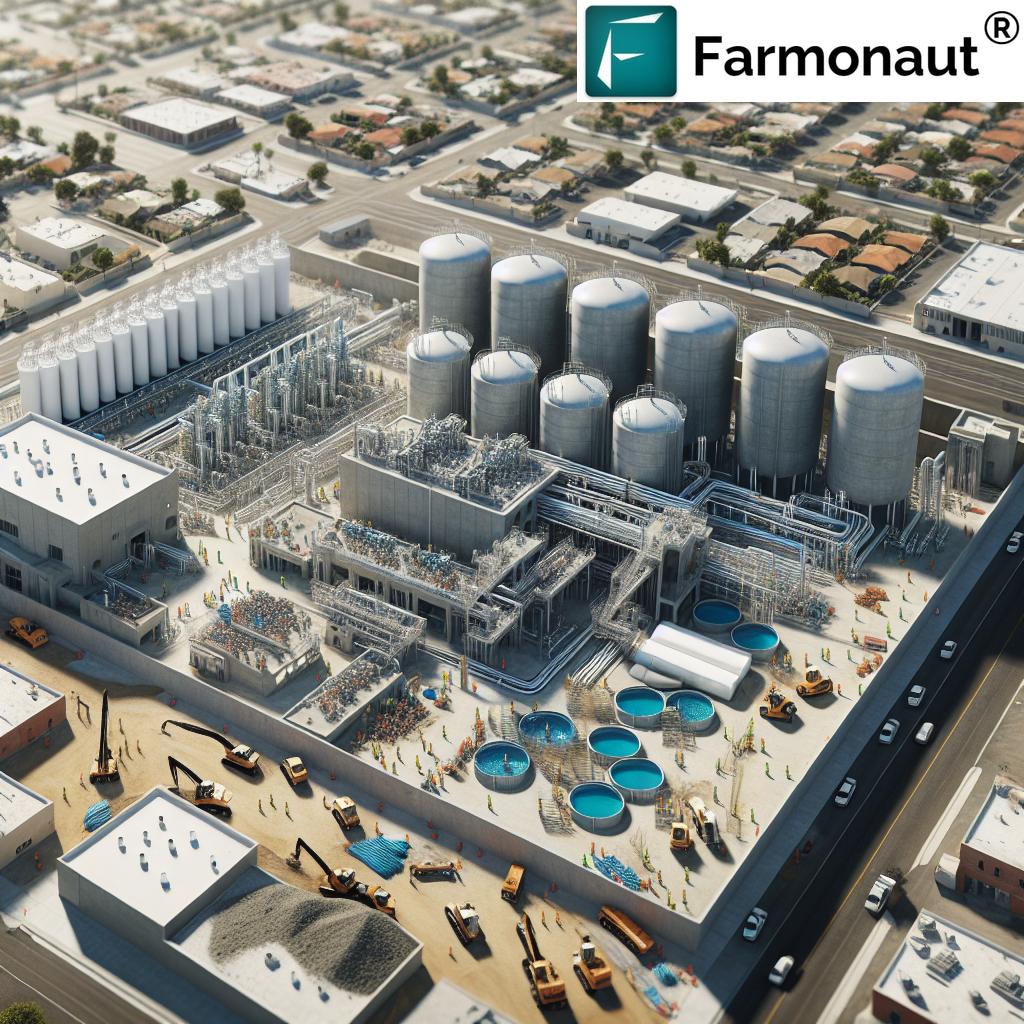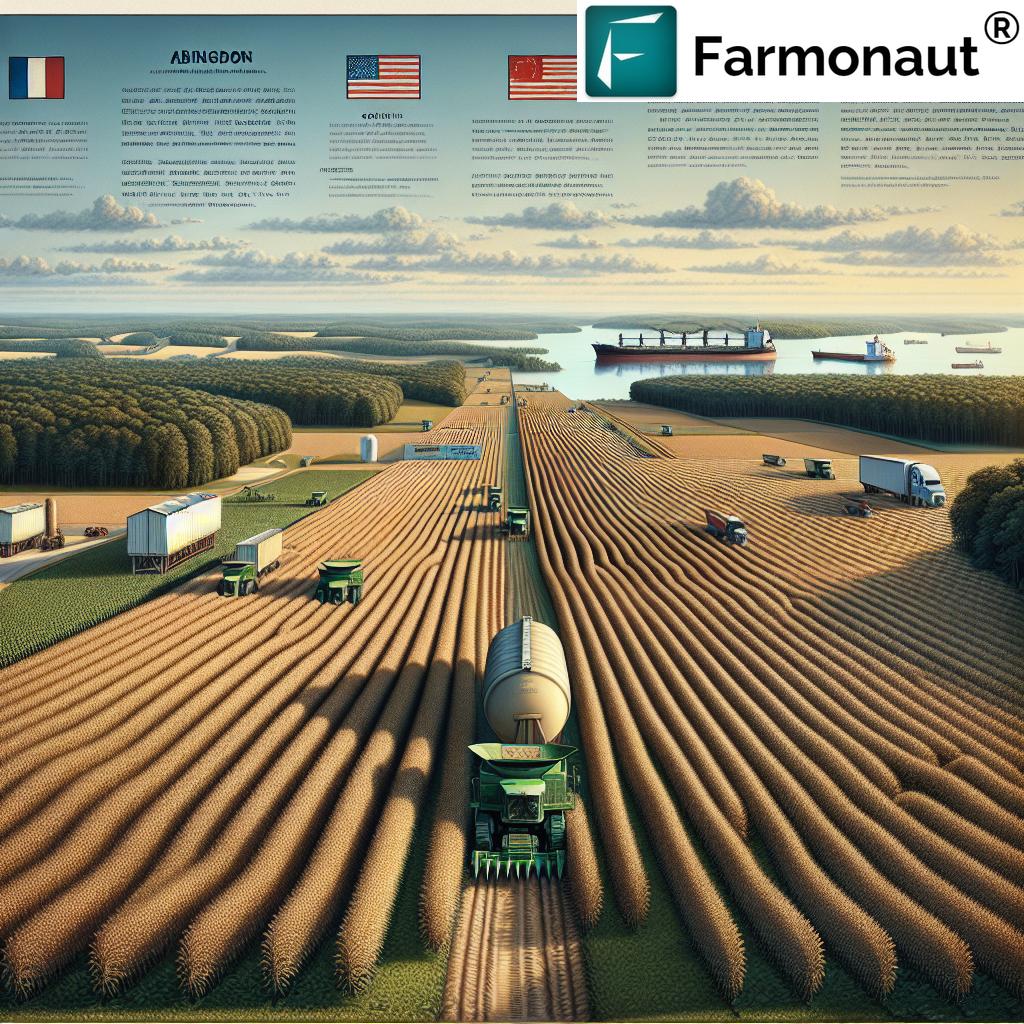Maine Farmers Face Uncertain Future: Federal Funding Freeze Threatens Local Food Systems
“Maine’s federal funding freeze impacts multiple farm sectors, including organic vegetables and cut flower production, affecting thousands of acres.”
As we delve into the heart of Maine’s agricultural landscape, we find ourselves faced with a crisis that threatens the very foundation of our local food systems. The recent federal funding freeze has cast a long shadow over the future of Maine’s farmers, leaving many in a state of uncertainty and financial strain. This critical situation is not just a temporary setback; it’s a potential turning point for the entire agricultural sector in our state.
In this comprehensive analysis, we’ll explore the far-reaching implications of this funding freeze, examining how it affects various aspects of farming in Maine, from organic vegetable production to cut flower cultivation. We’ll also investigate the broader consequences for food system sustainability and the potential long-term effects on our rural economies.
The Current State of Maine’s Agricultural Landscape
Maine’s agricultural sector has long been a cornerstone of our state’s economy and cultural identity. With over 8,000 farms recorded in 2012, our state has prided itself on its diverse agricultural output, ranging from traditional potato farms to innovative organic vegetable operations. However, this number has been steadily declining, and the current funding freeze threatens to accelerate this trend.
Let’s take a closer look at the key areas affected by this federal decision:
- Organic Vegetable Farming
- Cut Flower Production
- Soil Improvement Projects
- Solar Energy Initiatives
- Small-scale Farm Operations
Each of these sectors plays a crucial role in maintaining a healthy, diverse, and sustainable agricultural ecosystem in Maine. The funding freeze has put many of these operations at risk, jeopardizing not only the livelihoods of individual farmers but also the broader food security of our communities.
The Impact of Federal Funding on Maine Agriculture
Federal funding, particularly through USDA grants, has been a lifeline for many Maine farmers. These grants have historically supported a wide range of initiatives, from soil improvement projects to the implementation of renewable energy solutions on farms. The sudden freeze of these funds has left many farmers in a precarious position, unable to move forward with planned improvements or even maintain current operations.
| Agricultural Sector | Pre-Freeze Status | Post-Freeze Impact | Long-term Concerns |
|---|---|---|---|
| Organic Vegetable Farming | Steady growth, increasing demand | Delayed expansions, reduced crop diversity | Decreased competitiveness, potential closures |
| Cut Flower Production | Emerging niche market | Stalled infrastructure improvements | Loss of market share, reduced biodiversity |
| Soil Improvement Projects | Ongoing initiatives for sustainability | Halted projects, soil degradation risks | Long-term yield reductions, environmental impact |
| Solar Energy Initiatives | Growing adoption for cost reduction | Cancelled installations, increased operating costs | Higher carbon footprint, reduced farm profitability |
| Small-scale Farm Operations | Vital for local food systems | Financial strain, reduced investments | Increased farm consolidation, loss of rural jobs |
This table clearly illustrates the multi-faceted impact of the funding freeze across various agricultural sectors in Maine. The immediate effects are concerning, but it’s the long-term implications that pose the greatest threat to our state’s agricultural future.
Case Studies: Maine Farmers on the Front Lines
To truly understand the human impact of this funding freeze, let’s look at some specific examples of Maine farmers grappling with this new reality.
Krysten Powell: Cut Flower Farmer in Brunswick
Krysten Powell, owner of Suncatcher Flower Farm in Brunswick, represents the emerging cut flower industry in Maine. Her two-acre plot was set to benefit from a USDA contract promising up to $47,000 for soil improvement. Additionally, Powell had plans for a substantial fencing project, crucial for protecting her crops from wildlife.
“There will be consequences in the future for sure. Right now, we are just holding on tight,” Powell stated, encapsulating the uncertainty faced by many farmers in her position.
The potential loss of this funding doesn’t just affect Powell’s immediate plans; it threatens the long-term viability of her business and the growth of the cut flower industry in Maine.
Kevin Leavitt: Organic Vegetable Farmer in West Gardiner
Kevin Leavitt, owner of Farmer Kev’s Organic in West Gardiner, offers another stark example of the funding freeze’s impact. Leavitt had recently installed a solar array on his vegetable farm, an investment of $48,000 that he expected to recoup through a USDA grant. With the funding freeze, Leavitt now finds himself unable to pay the contractor who installed the system.
“They have said that they want to have America healthy again. The best way to do that is lower the cost of healthy food. This is only going to increase the cost,” Leavitt observed, highlighting the contradiction between the administration’s stated goals and the reality on the ground.

These case studies illustrate the immediate and personal impact of the funding freeze on Maine’s farmers. They also highlight the broader implications for sustainable farming practices and the affordability of healthy, locally-grown produce.
The Role of Technology in Mitigating the Impact
While the federal funding freeze presents significant challenges, innovative agricultural technologies offer a potential lifeline for Maine farmers. Companies like Farmonaut are at the forefront of this technological revolution in agriculture, providing solutions that can help farmers optimize their operations even in the face of financial constraints.
Farmonaut’s satellite-based farm management solutions offer a range of benefits that are particularly relevant in the current climate:
- Real-time crop health monitoring
- AI-based advisory systems
- Resource management tools
- Blockchain-based traceability
These technologies can help farmers make more informed decisions about resource allocation, potentially offsetting some of the impacts of reduced federal funding. For instance, precise crop health monitoring can lead to more efficient use of fertilizers and pesticides, reducing input costs while maintaining or even improving yields.
To learn more about how these technologies can benefit farmers, check out Farmonaut’s web application or explore their API for custom integrations.
The Broader Implications for Food System Sustainability
The funding freeze doesn’t just affect individual farmers; it has far-reaching implications for the entire food system in Maine and beyond. Here are some of the key concerns:
Food Security
As Krysten Powell pointed out, there’s a real fear that this situation could significantly impact “our children and families that are dealing with lower income situations, that are dependent on food, that goes directly to our food systems.” The potential closure of farms across Maine could lead to reduced local food production, making communities more reliant on imports and potentially increasing food insecurity.
Cost of Healthy Produce
Kevin Leavitt’s observation about the potential increase in the cost of healthy food is a crucial point. If small-scale organic farms struggle to survive, it could lead to a reduction in the supply of locally-grown, organic produce. This, in turn, could drive up prices, making healthy food options less accessible to many Maine residents.
Environmental Impact
Many of the projects affected by the funding freeze, such as soil improvement initiatives and solar energy installations, were aimed at improving the environmental sustainability of Maine’s farms. The halt of these projects could have long-term consequences for soil health, water quality, and the overall carbon footprint of our agricultural sector.
“The USDA funding halt threatens soil improvement projects and solar energy initiatives on over 100 Maine farms, jeopardizing sustainability efforts.”
The Political Landscape and Its Impact on Agriculture
The federal funding freeze is not occurring in a political vacuum. It’s important to understand the broader political context and how it’s shaping the future of agriculture in Maine and across the nation.
The Trump Administration’s Approach
The current funding freeze is part of a broader shift in agricultural policy under the Trump administration. While the administration has stated its commitment to supporting American farmers, its actions have sometimes contradicted this stance. As Congresswoman Chellie Pingree noted, “I think people who voted for Trump are saying, ‘Wait, I didn’t think you would be cutting funding for our farmers.'”
The Role of Congress
Congress plays a crucial role in shaping agricultural policy and funding. The unprecedented number of calls to Congresswoman Pingree’s office about the ripple effects of the federal funding freeze indicates the level of concern among Maine’s farming community. It also suggests a potential avenue for change through legislative action.
State-Level Responses
In the face of federal funding uncertainty, state-level initiatives may become increasingly important. Maine’s government may need to consider ways to support its agricultural sector, potentially through state-funded grants or other support mechanisms.
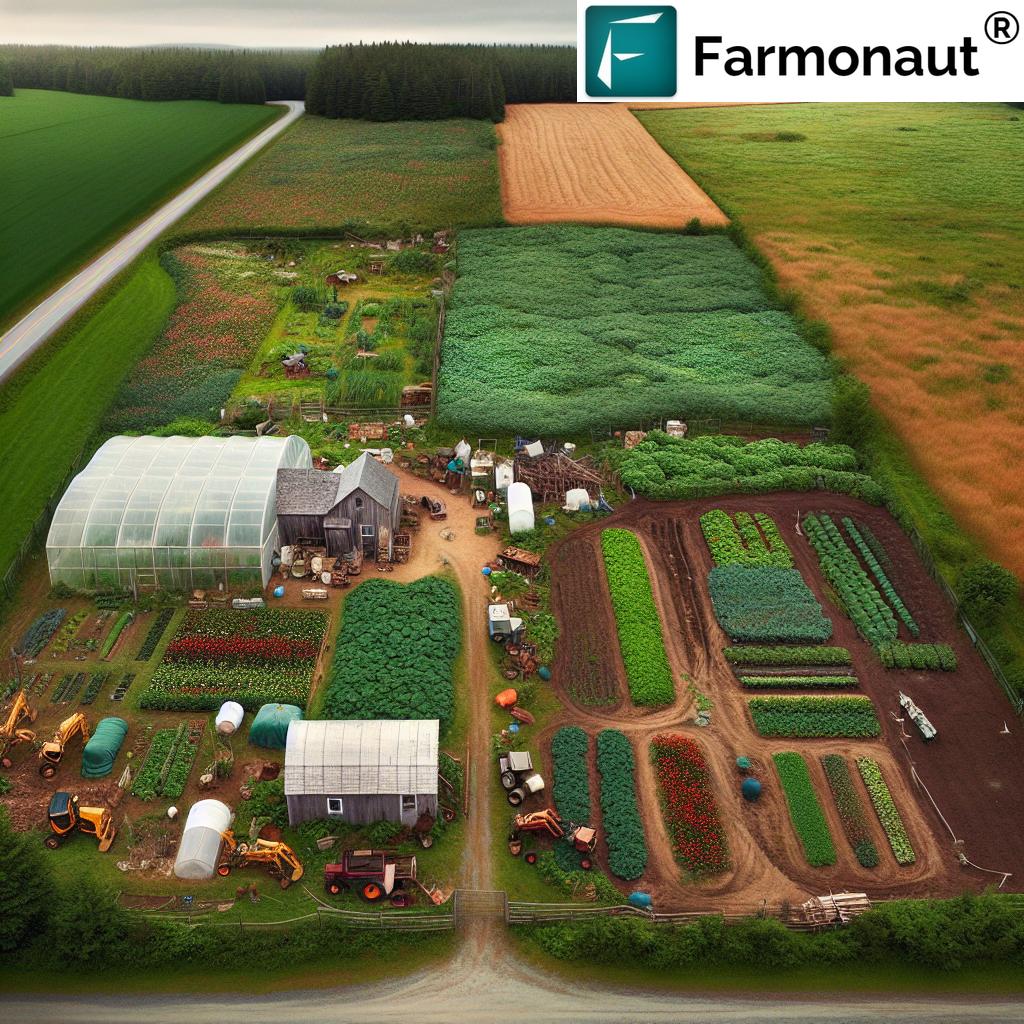
Looking to the Future: Potential Solutions and Adaptations
While the current situation is undoubtedly challenging, it’s crucial to look at potential solutions and ways Maine’s agricultural sector can adapt. Here are some avenues that farmers and policymakers might explore:
Diversification of Funding Sources
Reliance on a single source of funding, even if it’s federal, can leave farmers vulnerable to policy changes. Exploring alternative funding sources, such as state grants, private investments, or crowdfunding, could provide more financial stability.
Adoption of Cost-Saving Technologies
As mentioned earlier, technologies like those offered by Farmonaut can help farmers optimize their operations and reduce costs. By leveraging satellite imagery, AI, and other advanced tools, farmers can make more informed decisions about resource allocation, potentially offsetting some of the impacts of reduced funding.
For more information on how these technologies can benefit your farm, check out Farmonaut’s Android app or iOS app.
Collaborative Approaches
Farmers might consider forming cooperatives or other collaborative structures to share resources, knowledge, and potentially even funding. This could help smaller farms achieve economies of scale and become more resilient to financial shocks.
Advocacy and Policy Engagement
The farming community in Maine can continue to engage with policymakers at both the state and federal levels. By making their voices heard and highlighting the critical importance of agricultural funding, they may be able to influence future policy decisions.
The Role of Consumers in Supporting Local Agriculture
While much of the focus has been on the challenges faced by farmers, consumers also play a crucial role in shaping the future of Maine’s agricultural landscape. Here are some ways that Maine residents can support their local farmers during this challenging time:
Buy Local
Prioritizing locally grown produce and products can provide direct support to Maine’s farmers. This can include shopping at farmers’ markets, joining Community Supported Agriculture (CSA) programs, or simply choosing Maine-grown options at local grocery stores.
Advocate for Local Food Systems
Consumers can use their voices to advocate for policies that support local agriculture. This could involve contacting local representatives, participating in community discussions about food policy, or supporting organizations that work to strengthen local food systems.
Educate Others
Spreading awareness about the challenges faced by local farmers and the importance of supporting local agriculture can help create a more informed and engaged community.
Conclusion: A Call to Action for Maine’s Agricultural Future
The federal funding freeze poses significant challenges to Maine’s agricultural sector, threatening the livelihoods of farmers and the sustainability of our local food systems. However, this crisis also presents an opportunity for innovation, collaboration, and a renewed focus on the importance of local agriculture.
As we move forward, it’s crucial that all stakeholders – farmers, policymakers, consumers, and technology providers – work together to find solutions. By leveraging innovative technologies, exploring new funding models, and strengthening community support for local agriculture, we can help ensure a resilient and sustainable future for Maine’s farms.
The road ahead may be uncertain, but with creativity, determination, and collective action, Maine’s agricultural community can weather this storm and emerge stronger on the other side.
FAQ Section
1. How is the federal funding freeze affecting Maine farmers?
The funding freeze is impacting various sectors of Maine agriculture, including organic vegetable farming, cut flower production, and small-scale farm operations. It’s delaying or cancelling planned improvements, increasing financial strain, and potentially threatening the long-term viability of some farms.
2. What types of projects are being affected by the funding freeze?
Projects affected include soil improvement initiatives, solar energy installations, fencing projects, and other infrastructure improvements. These were often funded through USDA grants, which are now on hold.
3. How might this situation impact food prices for consumers?
The funding freeze could potentially lead to increased costs for healthy, locally-grown produce. As farmers struggle with reduced support and increased operational costs, these expenses may be passed on to consumers.
4. What can consumers do to support Maine farmers during this time?
Consumers can support local farmers by buying locally grown produce, participating in CSA programs, shopping at farmers’ markets, and advocating for policies that support local agriculture.
5. Are there any alternative funding sources available for farmers?
While federal funding is currently frozen, farmers may explore alternative sources such as state grants, private investments, or crowdfunding. Some may also benefit from adopting cost-saving technologies to optimize their operations.
Earn With Farmonaut: Affiliate Program
Earn 20% recurring commission with Farmonaut’s affiliate program by sharing your promo code and helping farmers save 10%. Onboard 10 Elite farmers monthly to earn a minimum of $148,000 annually—start now and grow your income!
For more information on how Farmonaut can help farmers optimize their operations, visit our API Developer Docs.







